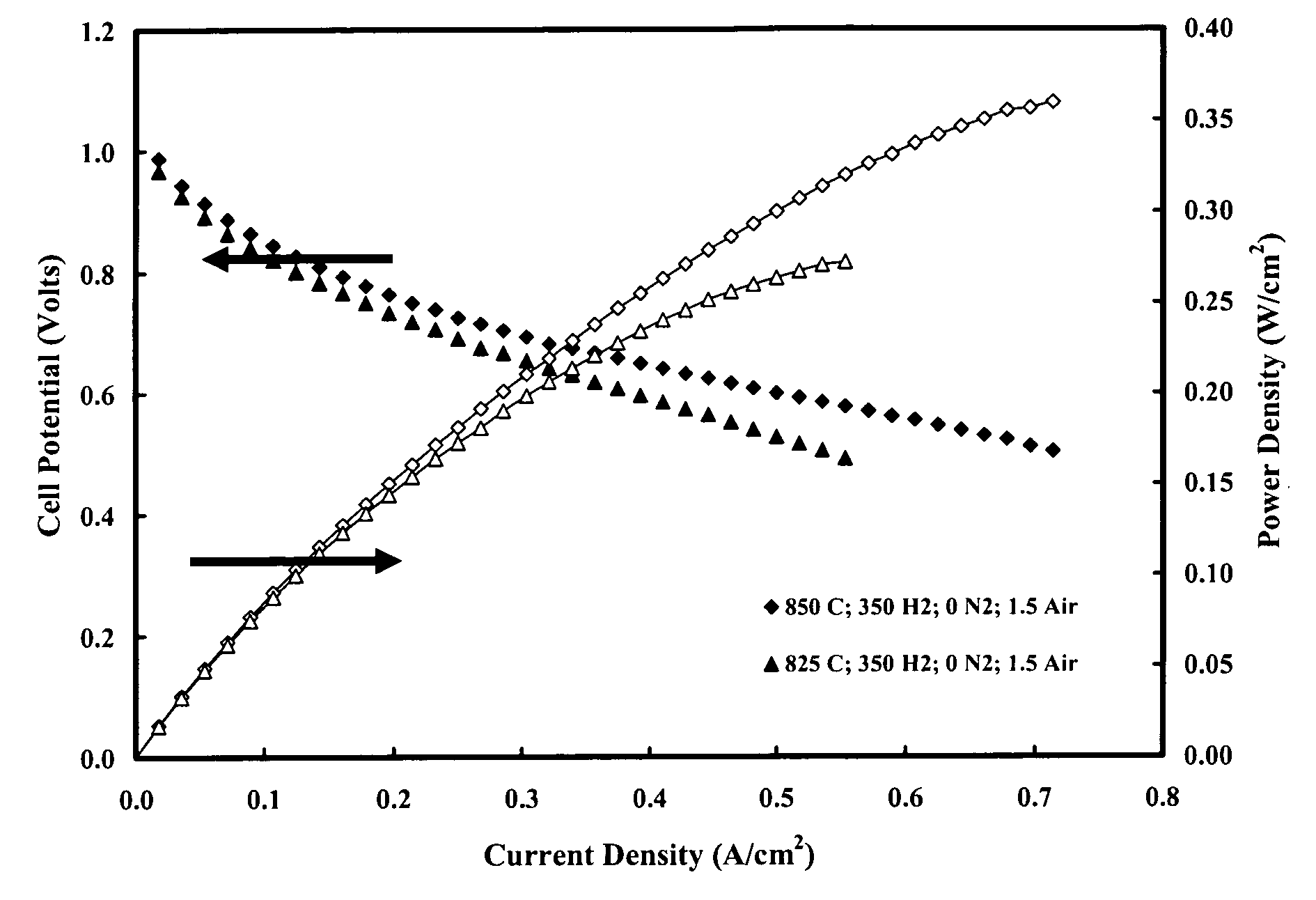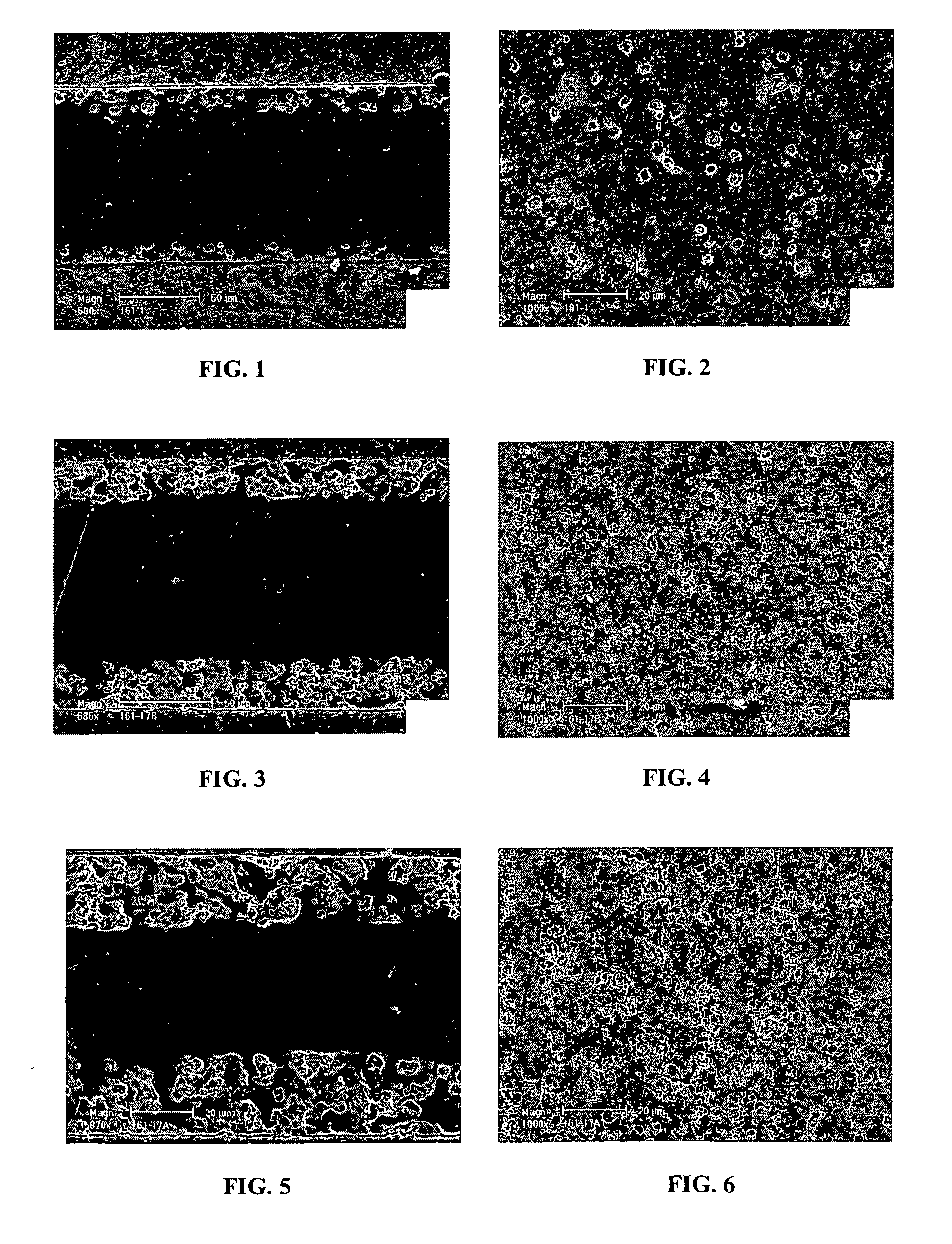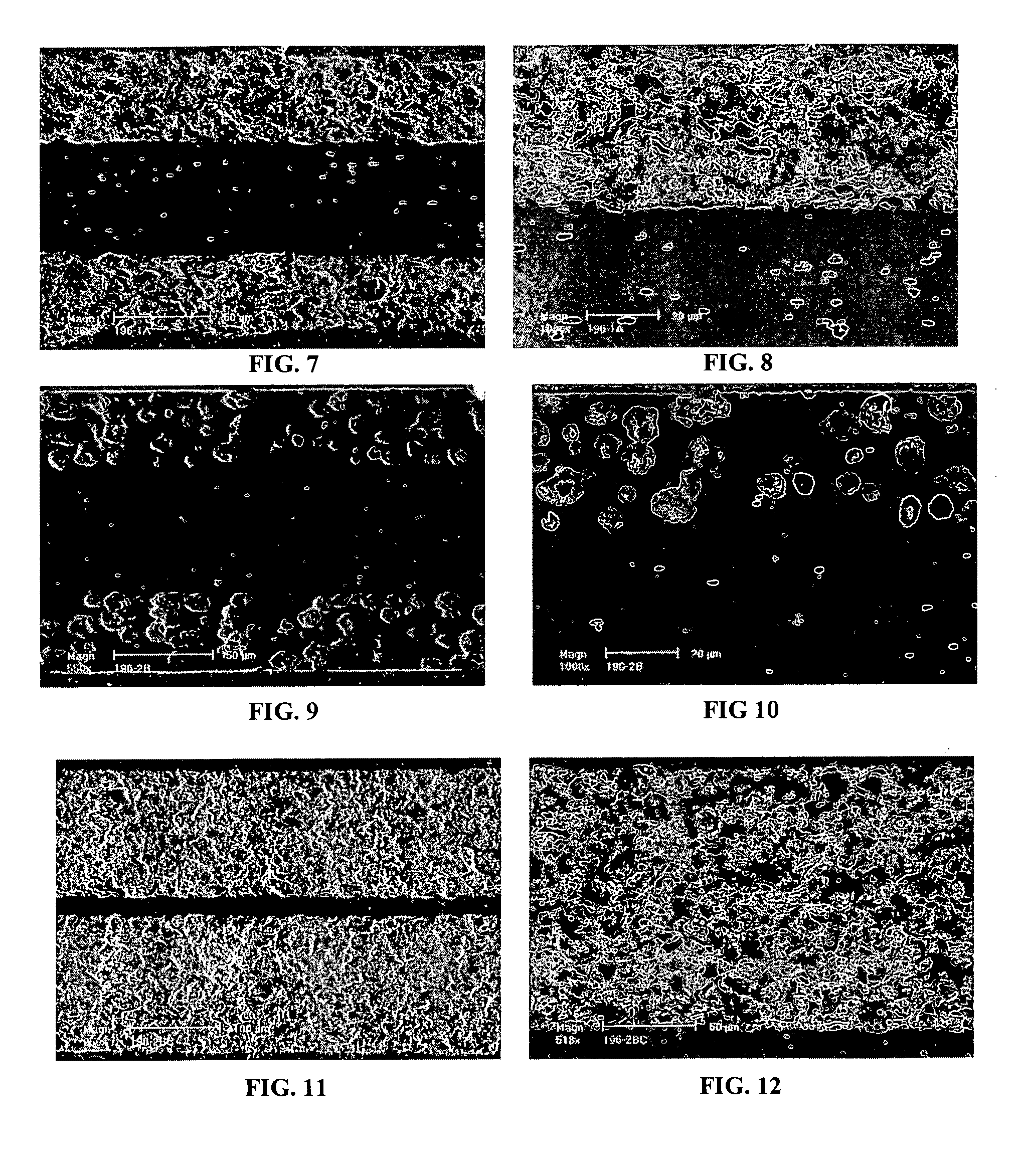Supported ceramic membranes and electrochemical cells and cell stacks including the same
- Summary
- Abstract
- Description
- Claims
- Application Information
AI Technical Summary
Benefits of technology
Problems solved by technology
Method used
Image
Examples
example 1
Symmetrical Structure with Dense Electrolyte Layer and Outer Layers with Low Pore Volume and Fine Pores
[0070] A tri-layer structure was constructed with cast tapes prepared with scandium stabilized zirconia powder (6ScSZ, Daiichi Kigenso Kagaku Kogyo Co., Ltd. 6Sc1AlSZ). The tape casting slurry for the dense electrolyte tapes was prepared in 500 ml Nalgene bottles. A bottle was filled with 300 g media (5 mm diameter, zirconia), 92.75 g solvent (1:1 ratio of xylene and ethanol, GFS Chemicals), 4.12 g diluted Blown Menhaden Fish Oil dispersant (15 wt % fish oil in ethanol) (Richard E. Mistler, Inc., DZ3), and 179.04 g 6ScSZ. The bottle was sealed and shaken to mix the ingredients, then placed on a ball mill for 4 hours. After 4 hours of milling, the bottle was removed and 5.88 g poly(butylbenzyl phthalate) (Richard E. Mistler, Inc., PBBP), 5.88 g poly(alkylene glycol) (Richard E. Mistler, Inc., PPAG), and 12.34 g poly(vinyl butyral) (Richard E. Mistier, Inc., B-98) were added. The bo...
example 2
Symmetrical Structure with Dense Electrolyte Layer and Outer Layers with High Pore Volume and Fine Pores
[0073] A tri-layer structure was constructed with cast tapes prepared with scandium stabilized zirconia powder (6ScSZ, Daiichi Kigenso Kagaku Kogyo Co., Ltd. 6Sc1AlSZ). The tape casting slurry for the dense electrolyte tapes was prepared in 500 ml Nalgene bottles. A bottle was filled with 300 g media (5 mm diameter, zirconia), 92.75 g solvent (1:1 ratio of xylene and ethanol, GFS Chemicals), 4.12 g diluted Blown Menhaden Fish Oil dispersant (15 wt % fish oil in ethanol) (Richard E. Mistler, Inc., DZ3), and 179.04 g 6ScSZ powder. The bottle was sealed and shaken to mix the ingredients, then placed on a ball mill for 4 hours. After 4 hours of milling, the bottle was removed and 5.88 g poly(butylbenzyl phthalate) (Richard E. Mistler, Inc., PBBP), 5.88 g poly(alkylene glycol) (Richard E. Mistler, Inc., PPAG), and 12.34 g poly(vinyl butyral) (Richard E. Mistler, Inc., B-98) were added...
example 3
Symmetrical Structure with Thin Dense Electrolyte Layer and Outer Layers with High Pore Volume and Fine Pores
[0076] A tri-layer structure was constructed with cast tapes prepared with scandium stabilized zirconia powder (6ScSZ, Daiichi Kigenso Kagaku Kogyo Co., Ltd. 6Sc1AlSZ). The tape casting slurry for the dense electrolyte tapes was prepared in 500 ml Nalgene bottles. A bottle was filled with 300 g media (5 mm diameter, zirconia), 92.75 g solvent (1:1 ratio of xylene and ethanol, GFS Chemicals), 4.12 g diluted Blown Menhaden Fish Oil dispersant (15 wt % fish oil in ethanol) (Richard E. Mistler, Inc., DZ3), and 179.04 g 6ScSZ powder. The bottle was sealed and shaken to mix the ingredients, then placed on a ball mill for 4 hours. After 4 hours of milling, the bottle was removed and 5.88 g poly(butylbenzyl phthalate) (Richard E. Mistler, Inc., PBBP), 5.88 g poly(alkylene glycol) (Richard E. Mistler, Inc., PPAG), and 12.34 g poly(vinyl butyral) (Richard E. Mistler, Inc., B-98) were ...
PUM
| Property | Measurement | Unit |
|---|---|---|
| Fraction | aaaaa | aaaaa |
| Fraction | aaaaa | aaaaa |
| Pore size | aaaaa | aaaaa |
Abstract
Description
Claims
Application Information
 Login to View More
Login to View More - R&D
- Intellectual Property
- Life Sciences
- Materials
- Tech Scout
- Unparalleled Data Quality
- Higher Quality Content
- 60% Fewer Hallucinations
Browse by: Latest US Patents, China's latest patents, Technical Efficacy Thesaurus, Application Domain, Technology Topic, Popular Technical Reports.
© 2025 PatSnap. All rights reserved.Legal|Privacy policy|Modern Slavery Act Transparency Statement|Sitemap|About US| Contact US: help@patsnap.com



